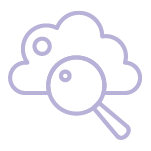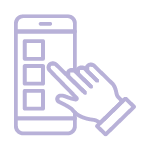Version 1.0
Part A – About this manual
1 Introduction
This is our Online Safety Code Manual. The Manual part of our response to:
- the Online Safety Act 2021 and
- the Internet Carriage Services Online Safety Code (Class 1A and Class 1B Material).
We’ll call them the ‘eSafety Act’ and the ‘eSafety Code’ for short. When we refer to ‘you’, that means our customer.
2 Commencement
This Manual comes into force at midnight at the end of 15 December 2023.
3 Outline
This Manual contains:
- rules that you must follow; and
- information to help you keep yourself and people around you safer; and
- rules and processes that we will follow – in order to:
- to create and maintain a safe online environment for internet users in Australia;
- empower people to manage access and exposure to seriously objectionable material; and
- strengthen transparency of, and accountability for, seriously objectionable material.
Part B – Rules that apply to you
4 Customer Online Safety Rules
- You must not produce online material that is in contravention of any Australian State, Territory, or Commonwealth law, including the eSafety Act.
- You must ensure that anyone who uses the internet access service we supply to you also does not produce online material that is in contravention of any Australian State, Territory, or Commonwealth law, including the eSafety Act.
- If you breach a rule in paragraph 4(a) or (b), it is a serious breach of your customer contract with us.
Part C – Information to help you
5 Internet content filtering products
About filters
- Filters are computer programs designed to block access to unacceptable internet content.
- Filters are voluntary in Australia. There is no legal requirement for them. But many people – especially parents and other carers of children – find that filters are a valuable addition to other measures for avoiding unacceptable content (such as careful supervision of children’s use of the internet).
- Filters may help to protect against:
- inappropriate web pages
- spyware and malware
- insecure instant messaging
- peer-to-peer sessions
- scams and identity theft.
- Typically, filters can operate at different levels e.g. on one setting, an adult may be permitted to access content that is ‘adults only’, while a child is on another setting that blocks that content.
- Filters are not guaranteed to exclude all harmful content or activities.
More Information
You can get more information about internet filters from:
- eSafety
esafety.gov.au/parents/issues-and-advice/parental-controls - Wikipedia
en.wikipedia.org/wiki/Internet_filter - Google Search
Search terms such as ‘web content filtering’ and ‘internet filter’ will locate up-to-date information from many sources.
Filtering products and how to obtain them
We don’t supply filtering products or warrant the performance of third-party products, but here are some providers that offer filtering options.
- Norton Family
au.norton.com/products/norton-family
You can subscribe to this filtering product on the website. - Aura Circle
meetcircle.com
You can subscribe to this filtering product on the website. - Qustodio
qustodio.com
You can subscribe to this filtering product on the website.
6 Communications Alliance’s Family Friendly Filter program, or ‘FFF’
Telecommunications industry association ‘Communications Alliance’ runs the FFF program, providing:
- more information about filtering and filtering products;
- links to filters that have been independently tested and certified. You
can access the FFF program at: commsalliance.com.au/Activities/ispi/fff
7 Complaining to content providers and eSafety about illegal online content
eSafety
eSafety is the Australian Government’s independent regulator for online safety. It is headed up by the eSafety Commissioner.
Learn more at esafety.gov.au
Illegal online content – also known as ‘class 1 material’
eSafety explains that:
Class 1 material is material that is or would likely be refused classification under the National Classification Scheme. It includes material that:
- depicts, expresses or otherwise deals with matters of sex, drug misuse or addiction, crime, cruelty, violence or revolting or abhorrent phenomena in such a way that they offend against the standards of morality, decency and propriety generally accepted by reasonable adults to the extent that they should not be classified
- describes or depicts in a way that is likely to cause offence to a reasonable adult, a person who is, or appears to be, a child under 18 (whether the person is engaged in sexual activity or not), or
- promotes, incites or instructs in matters of crime or violence.
Your right to complain
If you become aware of ‘class 1 material’ on the internet, or you receive an electronic message (e.g. email, text or app messages) that promotes it, you can complain to:
- the person providing the material or sending the message (if you have contact details for them and feel safe doing so); or
- eSafety.
If you complain to the person that provides the material, and you can’t resolve the matter with them, you can complain to eSafety. Or you can go to eSafety first.
Visit eSafety, and especially its ‘How eSafety can help’ page for more information.
eSafety’s complaints reporting process eSafety’s complaints form is here.
8 Class 1 material and online safety
Parents and other carers: how to supervise and control children’s access and exposure to class 1 material
eSafety offers expert advice and information about:
- online safety basics
- children finding online pornography
- filters and other parental controls
- encouraging good online habits
- eSafety’s ‘Early Years’ program for children under 5
- online safety for families
Class 1 material and online safety, generally
eSafety’s advice and information relating to children under care often applies to adults’ own use of the internet as well. Further, eSafety offers expert advice and information about:
The role and functions of eSafety
It’s good to understand the role and functions of eSafety, headed up by the eSafety Commissioner. On its website, eSafety explains:
- what eSafety is, and who the current eSafety Commissioner is
- eSafety’s structure
- its legislative functions under the eSafety Act
- the regulatory schemes it oversees
eSafety’s role is much wider than only dealing with class 1 material, but that’s an important part of it.
Part D – What we’ll do
9 Website link
We’ll include a prominent and easily accessed link to this Manual on our website.
10 Critical Information Summary
We will include a link to this Manual in our Critical Information Summaries, so that you’ll receive it at or close to the time of sale.
11 If we become aware of alleged class 1A material being hosted Class 1A material
‘Class 1A material’ is a sub-category of class 1 material. It includes child sexual exploitation material, pro-terror material, and extreme crime and violence material.
If we become aware of alleged class 1A material
In this case, we will:
- take reasonable steps to identify and obtain the email address of the service provider that hosts the material (if we don’t already know those details); and
- (if we know those details) notify it within 3 business days that it is hosting alleged class 1A material.
Our staff and our process
- We will inform our customer care staff:
- about the notification requirement above; and
- which staff member/s are responsible for making the notification.
- We will appoint one or more staff members to make notifications referred from customer care staff, and document those appointments.
12 Responding to customer complaints
If we receive a complaint about class 1 material, we will:
- respond to the complaint, or refer you to eSafety; and
- if the complaint alleges that a service provider is hosting class 1A material, act in accordance with clause 11 above.
13 Joining the Online Crisis Protocol
- This Protocol relates to the blocking of class 1A material i.e. child sexual exploitation material, pro-terror material, and extreme crime and violence material.
- eSafety maintains an ‘Online Crisis Protocol’. The current version as at October 2023 is the Protocol governing ISP blocking under Part 8 of the Online Safety Act 2021 (No.3).
- If eSafety asks us to join and sign the Online Crisis Protocol, we will do so.
14 Record keeping and reporting
Record keeping
We will keep records (eSafety Code Records) of:
- the steps we have taken to comply with the eSafety Code;
- the number of complaints we receive that:
- were about class 1A material; and
- we responded to (rather than referring you to eSafety);
- the number of complaints we receive that:
- were about class 1 material (other than class 1A); and
- we responded to (rather than referring you to eSafety);
- the number of complaints we receive about our compliance with the eSafety Code.
Reporting
If eSafety asks us to, we will:
- supply our eSafety Code Records; and
- explain why our steps to comply with the eSafety Code are appropriate –
within two months, but no more often than once in any 12 months.
Part E – Updating this Manual
15 Updates
We may amend or update this Manual from time to time, to comply with legal requirements, to respond to recommendations by eSafety or otherwise better support the objectives of the eSafety Act or eSafety Code




